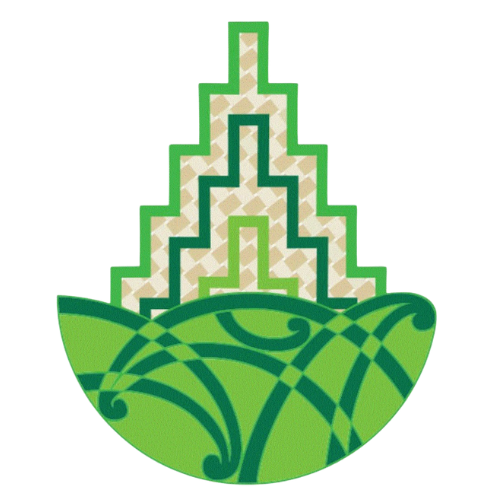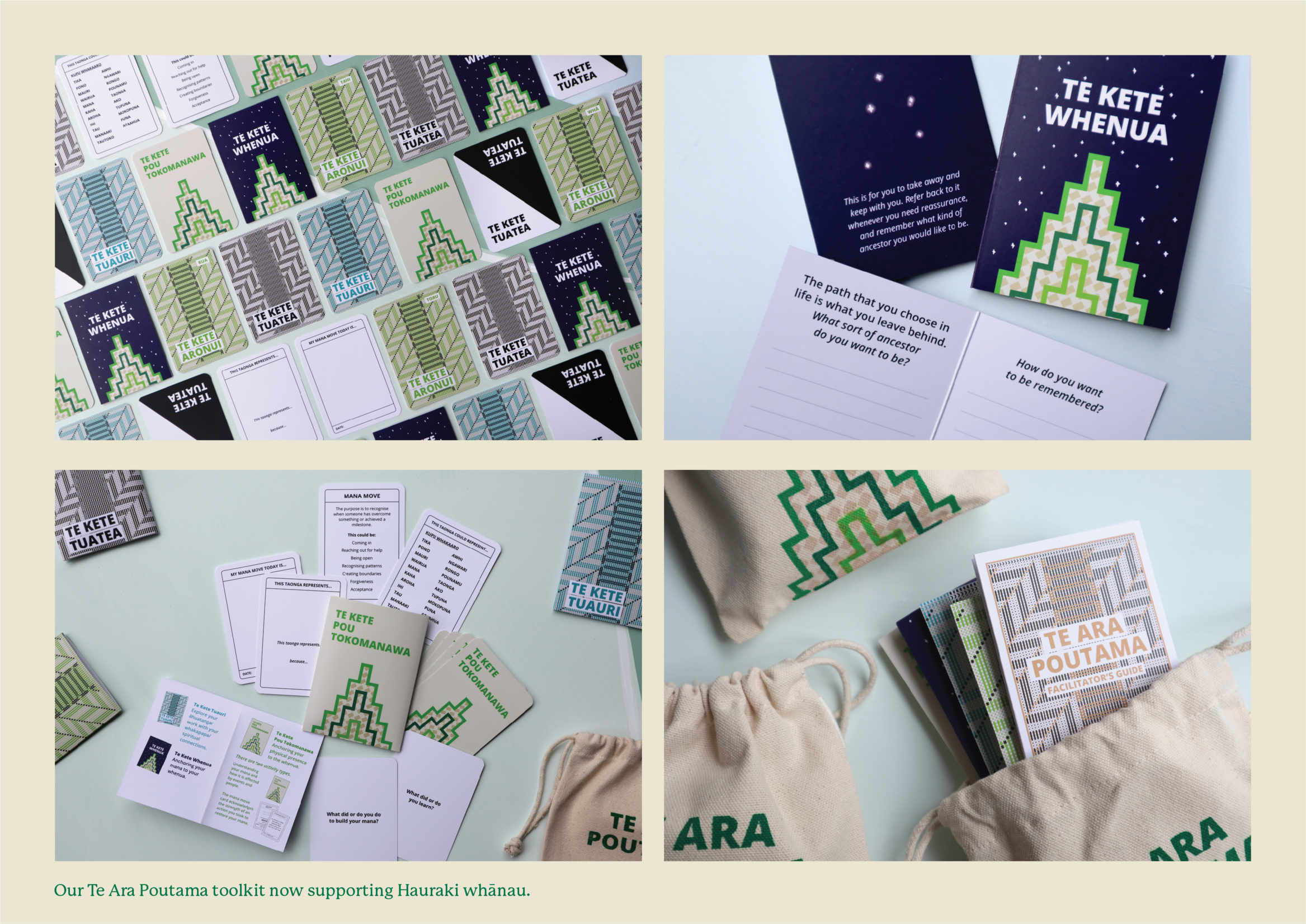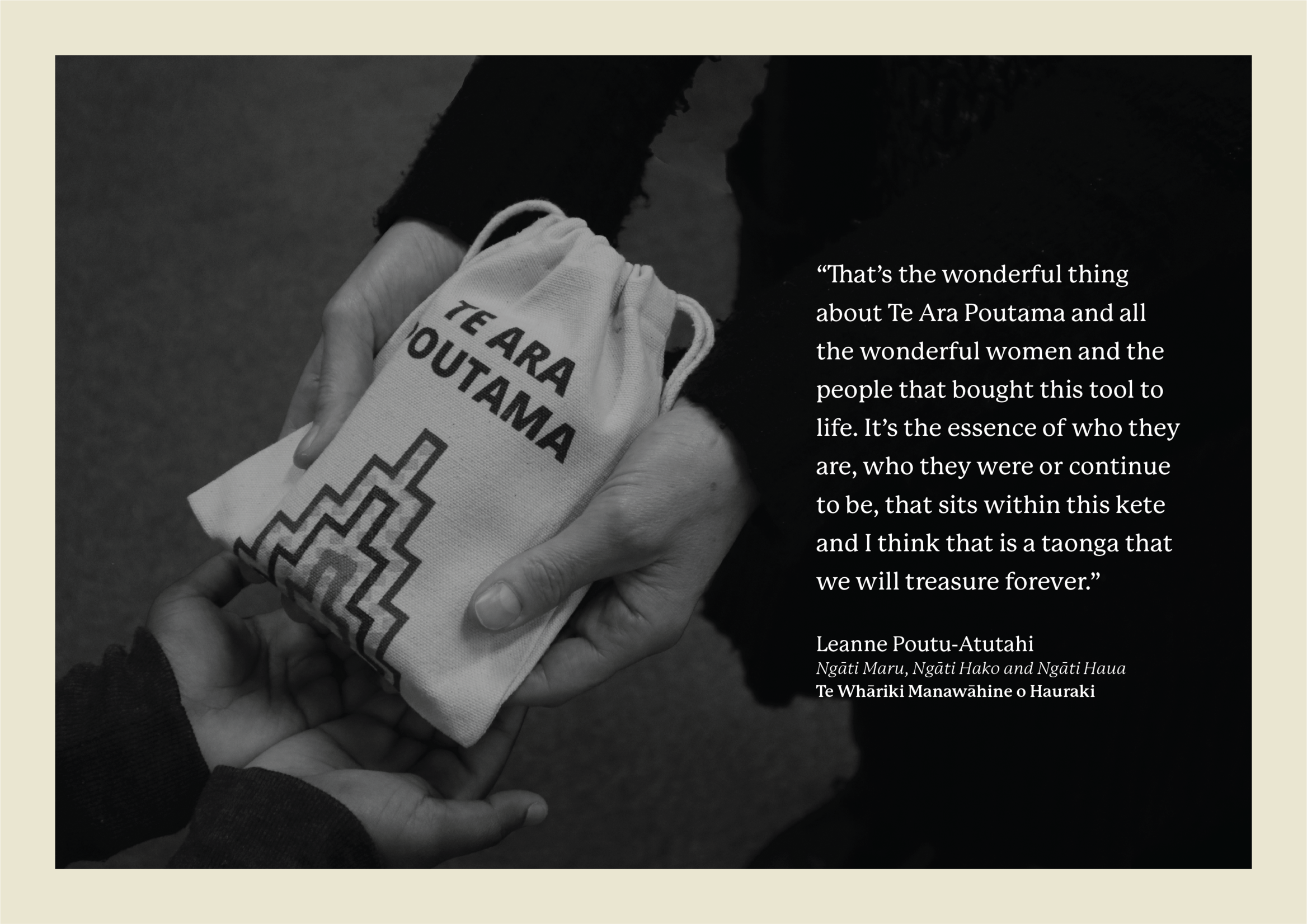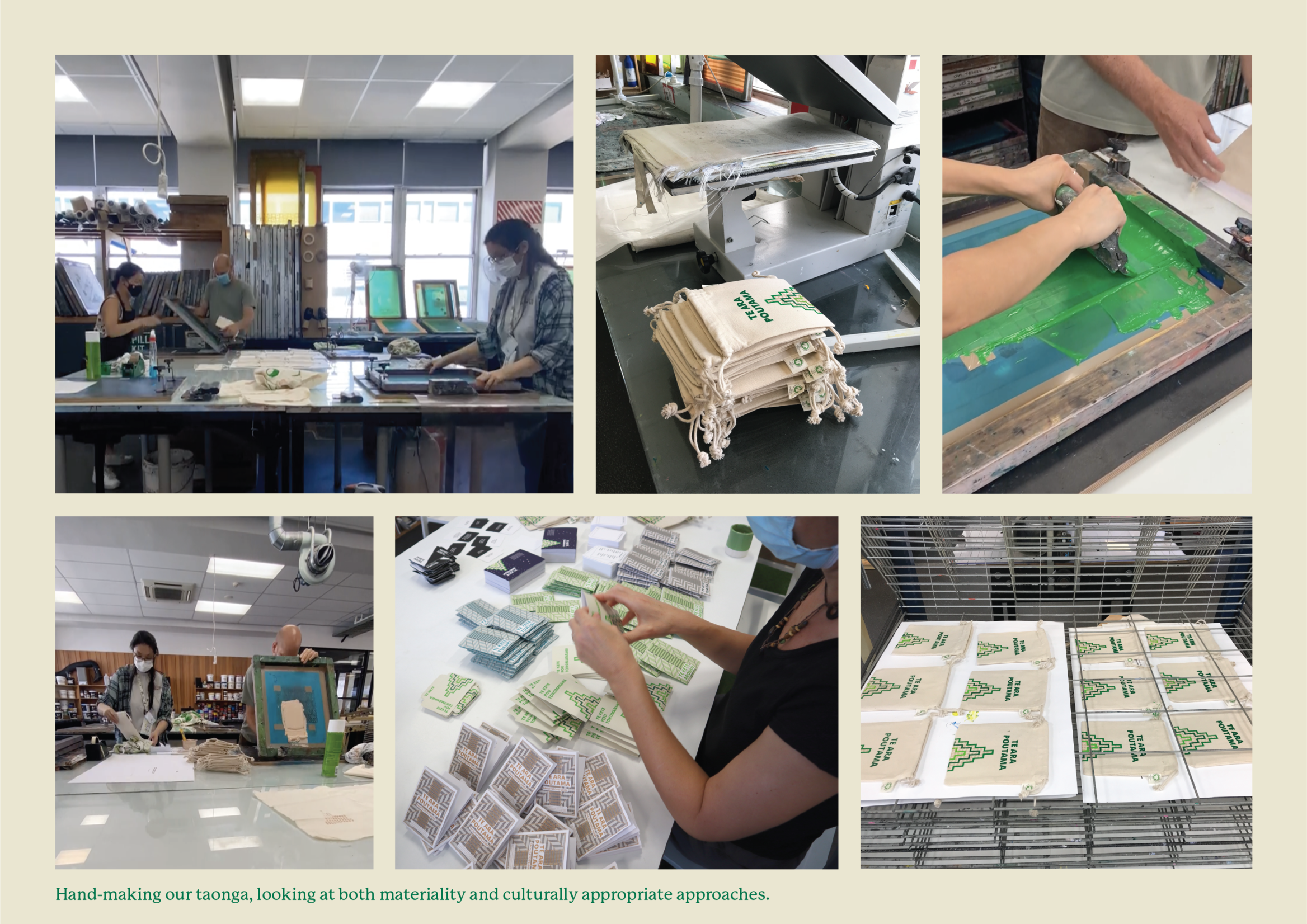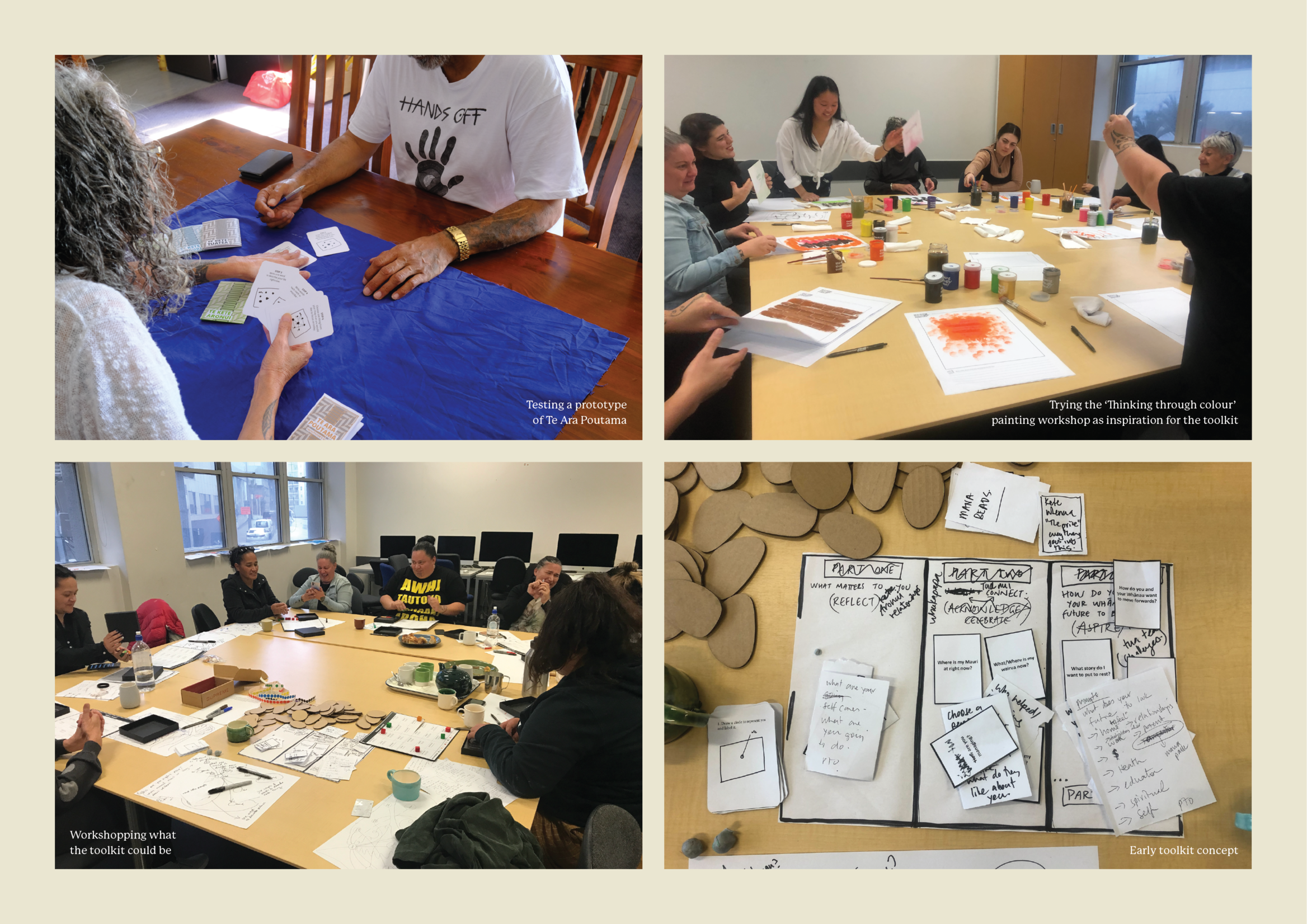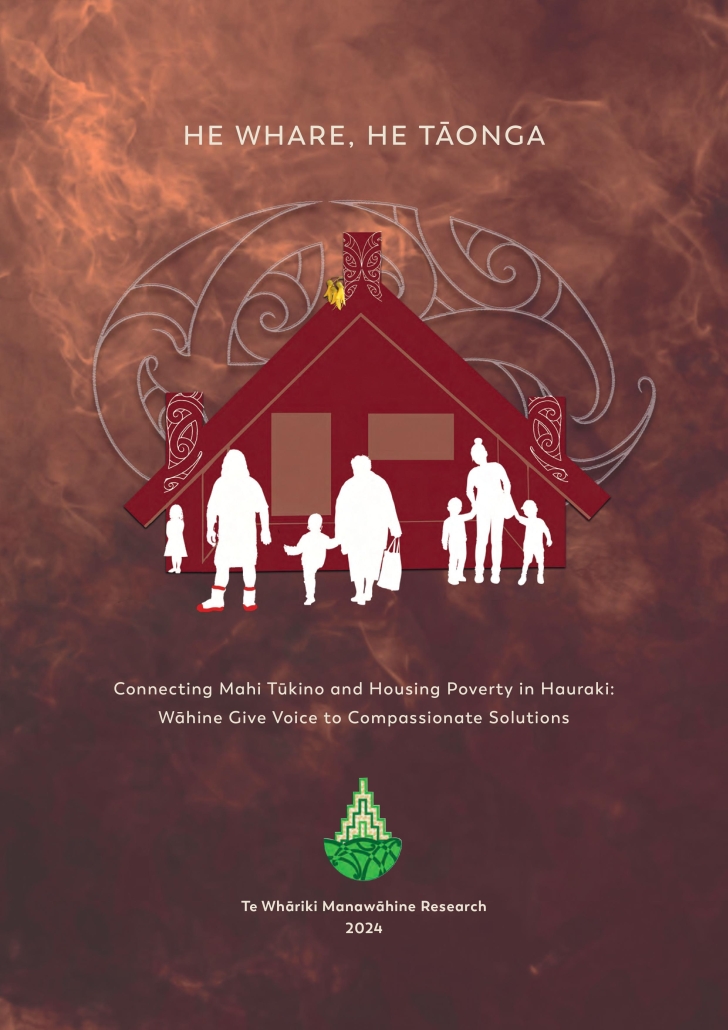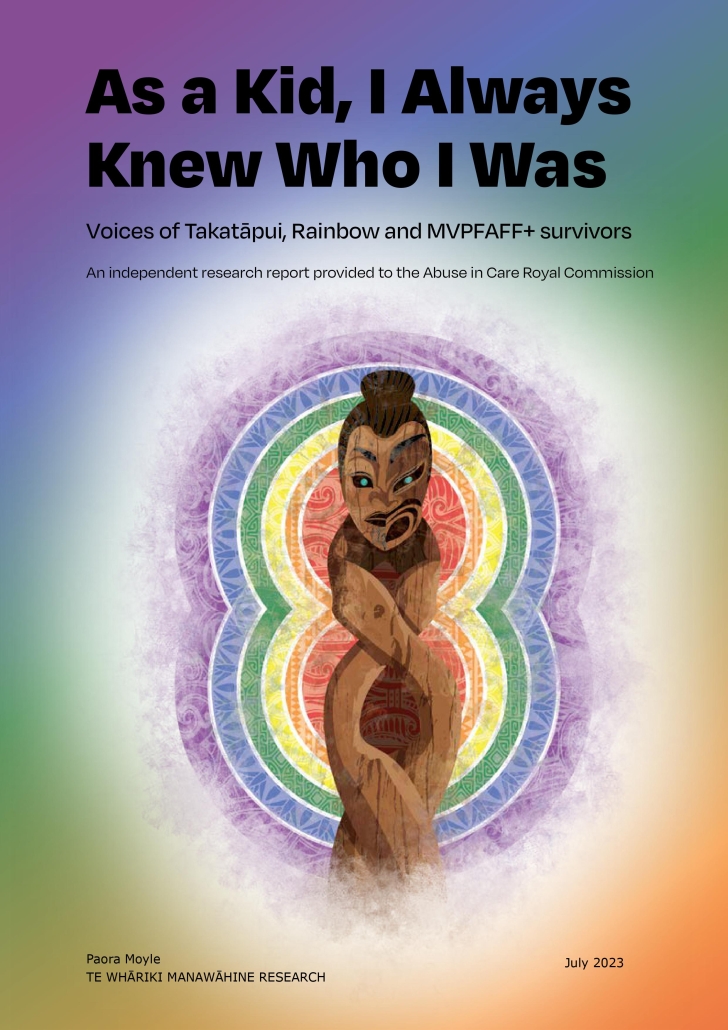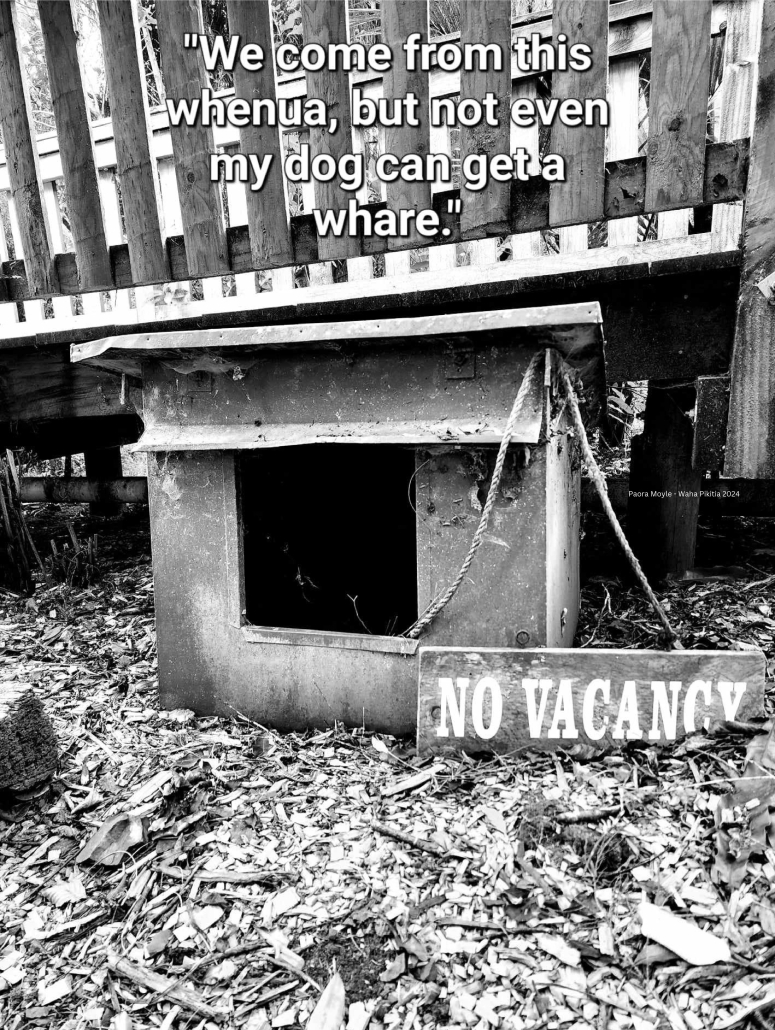Pūrākau Raraunga: Hauraki Voices, Hauraki Stories
Our research program “Hauraki Voices” showcases how whānau lived experience and mātauranga contribute to developing practical, local, place-based solutions for influencing local-led social and constitutional transformation.
Research Reports
Te Ara Poutama: A Healing Resource for Whānau
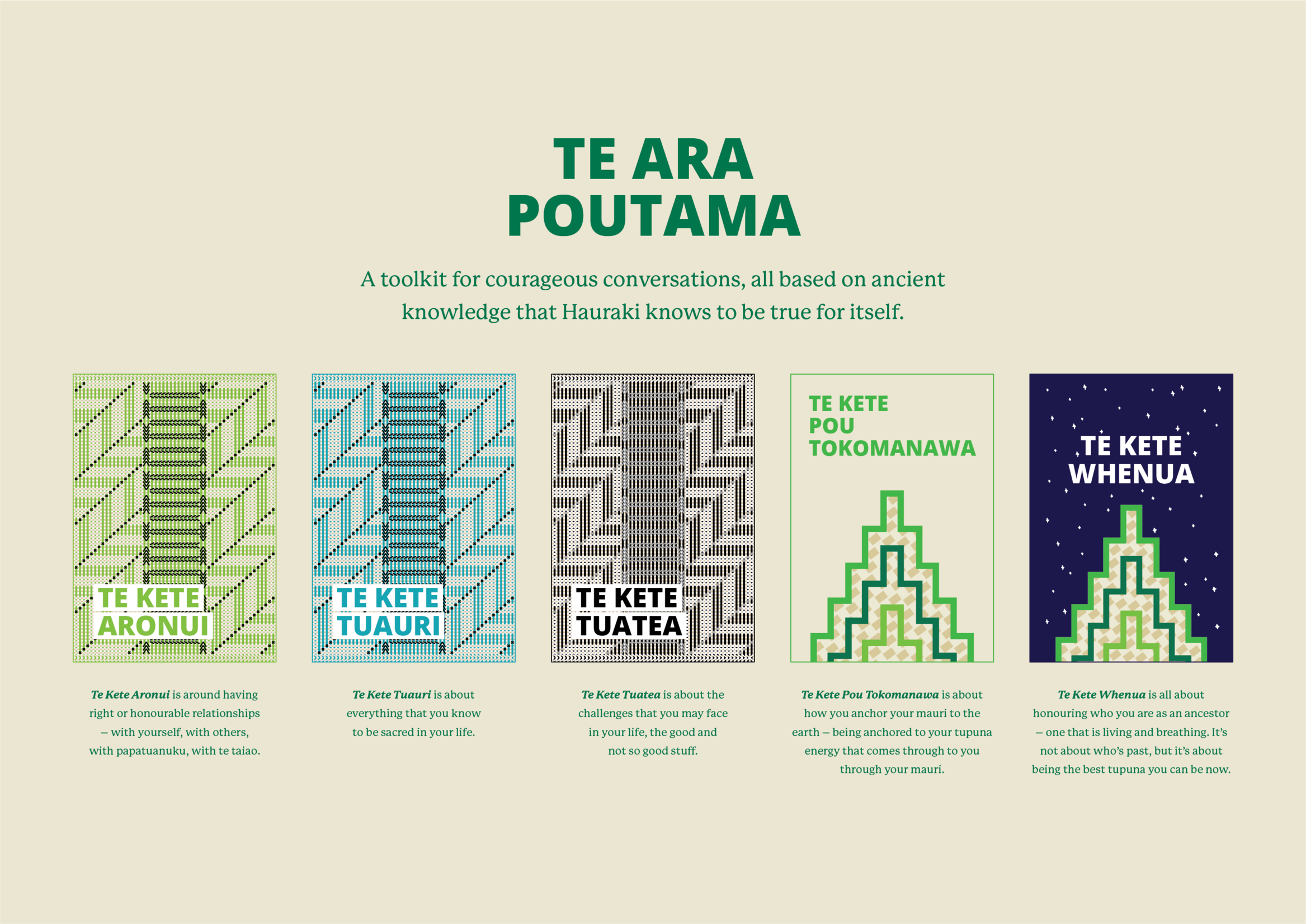
A series of discussions was held with Hauraki whānau and hapū about mahi tūkino (whānau and sexual violence) and its intergenerational trauma and harm. Participants requested resources to assist those affected by mahi tūkino.
We used a Kaupapa Māori methodology informed by mātauranga Māori and underpinned by the cultural values of Te Whāriki: whānaungatanga (honouring connectedness), mana motuhake (valuing integrity), pūtaketanga (sharing knowledge and wisdom), and hohou te rongo (healing and advocating justice for all) to critically explore the potential to support whānau experiencing or who have experienced mahi tūkino to determine what works, for whom, and in what circumstances.
Together we co-designed Te Ara Poutama, a card-based interactive toolkit that supports wāhine and their whānau through a process of challenging but guided kōrero, personal reflection and active processing.
It is used by kaimahi, whānau and hapū to bring together whānau affected by mahi tūkino, taking them through a range of activities to promote wellbeing and enhance their orangae and mana, and connect them to their whakapapa and whenua.
The design (guided by Te Whāriki) uses the tukutuku and the design from Te Whāriki’s logo as a representation of the Poutama — your life’s journey. Te Kete Aronui’s green represents growth and life, Te Kete Tuauri’s blue represents links to our ancestors, and Te Kete Tuatea’s black/white represents links between Te Pō (the world of contemplation and growth) and Te Ao Mārama (the world of understanding). The bag housing the kete pays homage to wāhine and represents the womb that holds life, potential, new beginnings and endings.
Whānau engaging with Te Ara Poutama will observe changes in whānau knowledge, attitudes, and behaviour, which represent a shift from the state of mauri mate (lack of anything) through to mauri oho (the awakening), mauri tū (a willingness to stand) and mauri ora (ultimate wellness, the best we can be). The concept of mauri noho (sitting still) demonstrates how transitioning from one state to another is neither linear nor direct but can be achieved with perseverance or repeated exposure to Te Ara Poutama.
He Whare, He Taonga Research Report
Abstract:
In this research, we explored the relationship between mahi tūkino (family violence and sexual violence) and housing poverty, focusing on the experiences of Wāhine Māori and their whānau in the rohe of Hauraki. We used Mana Wāhine research methodology to investigate how the intersection of mahi tūkino and housing poverty impacts the provision of secure housing for Hauraki Wāhine and their whānau. The findings confirm a connection, indicating that women bear the burden of the violence both at home and in the form of social and systemic violence most often from State agencies. Despite this, Wāhine central to this study spoke courageously of hope and offered compassionate solutions about redesigning the current housing system within the context of a Te Tiriti partnership.
Research team
Paora Moyle, Lesley Kelly, Ciara Duncan, Irene Kereama-Royal and Denise Messiter.
Citation
Te Whāriki Manawāhine Research. (2024). He Whare, He Taonga Report. Te Whariki Manawāhine o Hauraki. Thames, Aotearoa.
“As a Kid, I Always Knew Who I Was”
Abstract:
This report was commissioned by the Royal Commission of Inquiry into Historical Abuse in State Care to ensure that Takatāpui, Rainbow and MVPFAFF+ survivors and their communities’ voices are upheld. It brings together content and reflections on engagements with the Commission and captures themes, key issues, and aspirations for meaningful change. Takatāpui, Rainbow and MVPFAFF+ people suffered many kinds of abuse in State and faith-based care settings from 1950 to 1999 and to the present day, where they should have been safe and protected from harm. More broadly, Takatāpui, Rainbow and MVPFAFF+ people have suffered marginalisation in Aotearoa, New Zealand because of the nature of our society, the dominance of Western social constructs and the legal system born of English law. However, this report intentionally focuses on expressions of Takatāpui, Rainbow and MVPFAFF+ identity without and beyond the framing of struggle, conflict, harm, abuse or trauma
Author: Paora Moyle
Citation: Moyle, P. (2023). As a Kid, I Always Knew Who I was. Voices of Takatāpui, Rainbow, and MVPFAFF+ survivors: An independent research report provided to the Abuse in Care Royal Commission. Te Whariki Manawāhine Research. Thames, Aotearoa.
Hauraki Māori Weathering Cyclone Gabrielle Research Report
Abstract:
This research explores how Hauraki Māori mobilised to support whānau during Cyclone Gabrielle, revealing critical insights into Indigenous-led disaster response. Using a Kaupapa Māori methodology with pūrākau, semi-structured interviews, and focus groups, the study engaged 30 participants from Hauraki Māori communities and the Thames Coromandel District Council (TCDC). Findings highlight a deep disconnect between Māori ecological knowledge and TCDC’s disaster governance. Institutional racism, historical land dispossession, and inadequate civil defence support forced communities to rely on limited resources. Bureaucratic housing barriers further marginalised collective Māori ways of living. The study calls for the recognition of Māori-led emergency responses, the establishment of well-resourced community-based hubs, and a constitutional shift toward a Matike Mai framework. This approach affirms Māori rangatiratanga in disaster planning and response, demanding systems change to ensure tikanga-based, inclusive, and equitable emergency management that reflects the lived realities and aspirations of Hauraki Māori.
Authors: Paora Moyle, Lesley Kelly, Denise Messiter
Citation: Moyle, P., Kelly, L., and Messiter, D. (2025). Hauraki Māori Weathering Cyclone Gabrielle. Te Whāriki Manawāhine O Hauraki. Thames, Aotearoa.
Journal Articles
Connecting Mahi Tūkino and Housing Poverty in Hauraki Article
Abstract:
In this article, we explore the relationship between mahi tūkino (family violence and sexual violence) and housing poverty, focusing on the experiences of Wāhine Māori in the rohe of Hauraki. Mana Wāhine research methodology was used to investigate how the connection between mahi tūkino and housing poverty impacts the provision of stable housing for Hauraki Wāhine and their whānau. The findings establish a profound connection, indicating that Wāhine bear the burden of the violence both at home and through intersecting systemic violence enablers from state agencies. Despite this, Wāhine, central to this study, spoke courageously of hope and offered compassionate solutions towards redesigning the current housing system within the context of a Te Tiriti partnership.
Authors: Paora Moyle, Lesley Kelly, Irene Kereama-Royal, & Denise Messiter.
Citation
Moyle, P., Kelly, L., Kereama-Royal, I., & Messiter, D. (2024).Connecting Mahi Tūkino and Housing Poverty in Hauraki. Te Whariki Manawāhine o Hauraki. Thames, Aotearoa.
Pitopito Kōrero: Blog Posts
Pitopito Kōrero Tahi.
Tūria: A Rangatahi Response to He Whare He Taonga Research
This written and illustrated rangatahi response to the “He Whare He Taonga” research embodies the four overarching themes that emerged from the Pū-Rā-Kā-Ū analysis in the research. The artwork symbolises the life journey from tāmariki to kuia by capturing:
Pū – The source of desire to be home, define home, be free from whānau violence, and connect to kāinga with all it means for wāhine and their tamariki.
Rā – The inspirational and enlightening lived experiences of wāhine creating individual and collective wellbeing, reflected in their children’s laughter and play.
Ū – Compassionate solutions that sustain wāhine and their whānau, from reconnecting to whenua and tikanga Māori to developing papakāinga that nurture multigenerational living.
